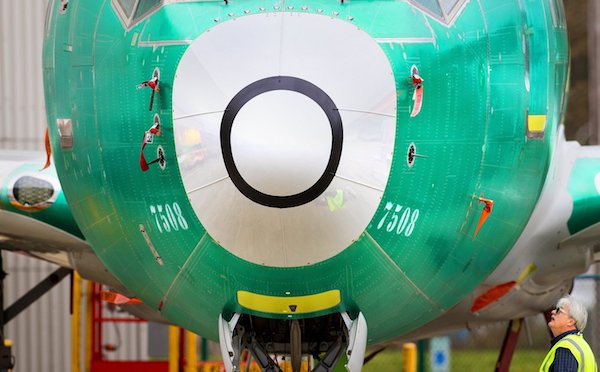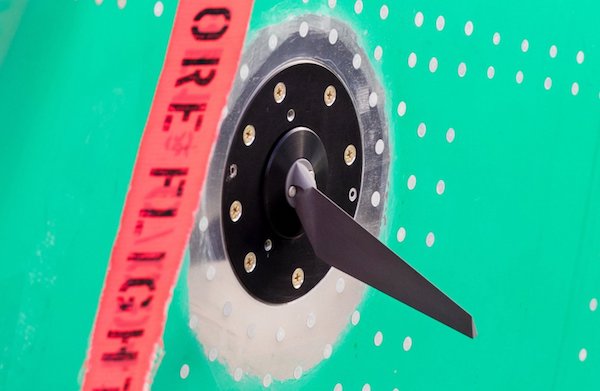
Dorothea Lange Farm boy at main drugstore, Medford, Oregon 1939

I don’t know exactly what lies behind the US attack on Soleimani anymore than others do. The difference between us appears to be that I don’t pretend to know. Is the attack truly the start of WWIII, as I see many voices present as fact? Or did the US merely take out a dangerous individual? I don’t know, and neither do they.
If the Iranian reaction is anything to go by, WWIII seems far away. Tehran did what Trump did in Syria: dump missiles in the desert. They purposely avoided hitting their targets, and killing anyone. We know this because they know the region very well and their missiles are good enough to hit what they want to hit.
Don’t let’s forget that Iran can’t and won’t do much of anything without talking to Putin -and perhaps Xi- first. Putin yesterday flew to Syria, maybe just to make his presence known. It is no use for anyone to discuss Iran-US without including Putin.
What the entire situation may boil down to is even a new opening for talks between Iran and the US. Whether that is more or less likely than WWIII is something I don’t know, and neither do all those commentators.
As for all the war belligerent talk by Tehran and Washington, it’s how these things are conducted; no use taking that stuff at face value. Iran must talk the talk, and fly the missiles, for domestic purposes. Ditto for Trump.
Iran FM Zarif -who was refused a US visa just days ago- makes a peace offer. And sure, oil prices shoot up, but neither country sees that as a bad thing -for now-.
• Iranian Strike Was ‘Proportionate’ Self-Defense, No Need For War – FM Zarif (RT)
Missile strikes against US bases in Iraq were legitimate self-defense measures and are now over, as Iran does not intend to wage war or escalate the situation further, Foreign Minister Javad Zarif has said. Two volleys of missiles aimed at the Al-Asad base in Iraq’s Anbar province and another facility near Erbil were “proportionate measures in self-defense” under 51 of the UN Charter, Zarif tweeted from Tehran in the early hours of Wednesday, describing the action as “completed.” Zarif noted that the strikes targeted the US base from which “cowardly” attacks were launched against Iranian citizens and senior officials – referring to General Qassem Soleimani, head of the Islamic Revolutionary Guard Corps (IRGC) Quds Force, killed in a drone strike outside Baghdad last week.
Iran threatened “hard revenge” against the US for Soleimani’s death. The strike on Al-Asad reportedly took place at 01:20 local time on Wednesday, the exact time Soleimani’s convoy had been struck. Another volley of missiles followed about an hour later. The Pentagon said no Americans were killed in the attacks. There are conflicting reports about possible Iraqi casualties. As it sent out the two missile volleys, the IRGC threatened any regional US allies they would be targeted next if their territory is used for any follow-up attacks on Iran.

Trump’s tweet: All is well! Missiles launched from Iran at two military bases located in Iraq. Assessment of casualties & damages taking place now. So far, so good! We have the most powerful and well equipped military anywhere in the world, by far! I will be making a statement tomorrow morning.
If the US press were in working order, Trump would not make such crazy claims. But nobody tells Americans how far Russia has moved ahead of the US in military matters. Dmitry explains again:
• Predictions for the 2020s (Dmitry Orlov)
With regard to military matters, it seems safe to declare that by the end of the 2020s the US empire will be definitively over. It is already the case that the US can no longer even threaten a long list of countries, especially those armed with Russia’s new air defense systems which can establish no-fly zones for US aircraft, while the US military cannot function at all if it is denied air superiority. It is also already the case that the entire US aircraft carrier fleet is obsolete and useless because the latest Russian missiles can reliably sink it from greater distances than can be reached by the armaments or the aircraft these aircraft carriers carry.
Add to this the fact that Russia’s latest missiles, which can achieve Mach 20 and which cannot be intercepted using any current or planned missile defense systems, make it possible to take out targets on the US mainland, including the Pentagon itself, should the US ever attack Russia. The US still has nuclear deterrence, plus the ability to cause minor mischief by arming and training terrorist groups around the world, but it is so woefully behind Russia in weapons development that it will probably never catch up in spite of constantly outspending Russia ten-to-one on defense.
Russia’s stance with regard to NATO troops training, preening and posturing provocatively right on Russia’s borders has been largely dismissive. Russia has largely rearmed with new weapons based on new physical principles known only to its scientists, engineers and designers and is now cutting its defense budget while bringing in billions from increased worldwide weapons sales. The US cannot catch up—not due to lack of money (as long as the printing press continues to run) but due to lack of brains.
As the impotence of the US military becomes obvious, the NATO alliance will come apart. Already Turkey, which is NATO’s second-largest member, is barely a member at all and far more interested in cooperating with Russia and Iran on defense matters rather than with the US. In spite of this, the US military-industrial complex will continue its zombie-like existence until the money dries up, at which point my initial prediction of US troops left stranded at a multitude of overseas locations with no resources available to repatriate them will come true.
[..] Although collapse in the US is yet to run its course, I feel that it is already time to give the United States of America a more appropriate name. After all, it is not the only united states on the American continent: there is also Estados Unidos Mexicanos. This shameful, self-important name-squatting has to come to an end at some point. I therefore propose renaming the USA—perhaps not immediately, but perhaps in a decade, maybe two. As its new name I would like to suggest something like the Republic of Deteriorado, Degenerado or Disintegrado. Its national language is likely to become Spanglish. Its national bird already seems to be the extended middle finger. As for its flag, here we can simply observe which flag is considered sufficiently sacred and inviolable to result in jail time for anyone who dares to burn it in public. And it turns out to be the LGBTQ rainbow flag.

“..the two countries slugged it out through the entire 1980s. About a quarter-million people died in that war. ..”
• Some Other People Do Some Other Things (Kunstler)
The financial markets know that a lot less new investment will flow into shale oil from now on, since it was a lousy investment the past ten years, despite all the admirable techno-virtuosity behind it, and that before long the mighty shale oil bell curve will turn down, and everything economic with it. Folks who make foreign policy and military plans may sense this too, perhaps dimly. But then they confront the additional mystifying calculus of all those moiling parties in the Middle East jockeying for position and advantage as the oil-hungry big dogs of the world desperately try to figure how to keep those oil flows going their way.
Eventually — and sooner rather than later — the mighty flows of everything in the global economy have to neck down, and the process will probably consist of sharp political and economic shocks rather than simple deceleration. Just such a shock was the assassination of General Qassim Suleimani. His multifarious activities all around the Middle East were in themselves a symptom of the instability dogging Iran as its economy wobbles. Much of that is due to the squeeze that the USA put on Iran in the way of trade sanctions and currency movements. And much of that stems from events over forty years ago when the mullahs ran the shah out of town and took the American embassy staff hostage for well over a year. The enmity on both sides runs wide and deep.
Iran’s neighbor, Iraq, is quite a prize oil-wise, and Iran has made significant inroads attempting to gain control of that broken country, even while the USA retains its garrisons there. The region of Iraq closest to Iran, Basra, is overwhelmingly Shia, like Iran, and produces a lot of Iraq’s oil. Baghdad is not so hot to give it up. Remember, the two countries slugged it out through the entire 1980s. About a quarter-million people died in that war. It is surely a high priority for the USA to not let that Iraqi oil slip into Iran’s hands. It’s a zero-sum game, of course, because even Iraq’s copious oil reserves will not save the global economy’s ass, let alone Iran’s economy.

It’s become laughable. Exclusively.
• Maduro Opponents Storm Parliament To Reinstall Guaidó As Leader (G.)
Venezuela’s increasingly byzantine political meltdown took its latest turn on Tuesday as opponents of authoritarian president Nicolás Maduro stormed the country’s parliament to reinstall Juan Guaidó as their leader. Troops loyal to Maduro had surrounded the palm-dotted national assembly compound in Caracas in a bid to keep Guaidó and his supporters out after the president’s attempt to seize control of the parliament on Sunday. But in frantic scenes that spread rapidly on social media, Guaidó and his backers were filmed physically forcing their way into the 19th-century capitol to cheers of “Viva Venezuela!” Outside, pro-government thugs attacked and robbed Venezuelan and European journalists, including one correspondent from Spain’s El País.
Inside, Guaidó was sworn in for a second term as Venezuela’s caretaker leader, even though the auditorium’s electricity had been cut. “In the name of those who have no voice, of the mothers who weep in the distance, of the teachers who are battling and the nurses and the students, of the political prisoners … in the name of Venezuela, I vow to fulfill the duties of interim president,” said Guaidó, who is recognized by more than 50 governments including the United States and United Kingdom but boasts little concrete power. Guaidó’s wife, Fabiana Rosales, tweeted: “Now the struggle goes on, together with all Venezuelans we will rescue our country from dictatorship.”

But they don’t have nearly enough simulators.
• Boeing Changes Stance, Recommends 737 MAX Simulator Training For Pilots (R.)
If U.S. and international regulators ultimately back Boeing’s proposal, it could take airlines longer to prepare their crews to fly the 737 MAX jets that have been grounded since March after two crashes that killed 346 people. Boeing has been working on revised pilot training and software updates for the 737 MAX to win regulatory approval for the jets to fly commercially again. After repeated setbacks, the U.S. Federal Aviation Administration (FAA) is not expected to give the greenlight until at least February, perhaps March or later. Last year, the planemaker said it would propose that MAX pilots did not need to train on costly simulators, a position it originally used to market the latest version of its 737 narrowbody workhorse against competition from European rival Airbus.
Airlines that bought the MAX have had to cancel flights while the global fleet remains grounded. If only computer-based training were required for renewed 737 MAX commercial flying, Boeing’s largest customer Southwest Airlines had said it would take one to two months to prepare its more than 9,500 pilots on the updates. Southwest had not been part of Boeing’s recent discussions on pilot training recommendations and could not provide additional cost or timing estimates before there was specific guidance, spokeswoman Brandy King said. Southwest has three MAX simulators in various stages of FAA certification and expects three more later this year.
American Airlines and United Airlines each have one MAX simulator. Not many MAX simulators exist and it was unclear if training could be performed on the 737 NG simulator that 737 pilots have used until now. As of December, Toronto-based manufacturer CAE had delivered 23 MAX full-flight simulators, a spokeswoman said.

This could have been written a year ago. Any progress?
• US, EU Regulators To Meet With Boeing This Week On 737 Max Software Audit (R.)
U.S. and European aviation safety regulators will meet with Boeing this week in an effort to complete a 737 MAX software documentation audit – a key step toward the grounded plane’s eventual return to service. The European Union Aviation Safety Agency (EASA) and Federal Aviation Administration (FAA) both confirmed on Tuesday that they will meet in the Seattle-area with Boeing before heading to a Rockwell Collins facility in Cedar Rapids, Iowa, in an effort to complete the audit. Documentation requirements are central to certification for increasingly complex aircraft software, and can become a source of delays. In 2008, EASA nearly derailed Europe’s Airbus A400M military transporter over software documentation following a failed audit.
In early November, EASA and FAA met with Boeing at the Rockwell Collins facility in Cedar Rapids and did not approve the audit. Instead, they sought revisions to the documentation of the 737 MAX software fix and flagged a number of issues, Reuters reported. In mid-January, Boeing will halt production on the best-selling plane, which has been grounded since March following two crashes in Ethiopia and Indonesia that killed 346 people in five months. Boeing said on Monday it was reassigning 3,000 employees to other jobs as a result of the temporary halt. Reuters has reported previously that the FAA is unlikely to approve the plane until at least February and perhaps until March or later. Boeing said in November that regulators had requested the “information be conveyed in a different form, and the documentation is being revised accordingly.”

Big in China.
The U.S. shadow banking sector is alive and well, growing at a fast pace and remains opaque, experts said Friday. And while the sector might not cause the next downturn, it could add to the economy’s troubles in a downturn. The shadow banking sector, now called by the more polite term “private debt market’ has roughly tripled in size over the past few years and one estimate puts the size around $1.2 trillion, said Steven Kaplan, a professor at the University of Chicago, at the American Economics Association conference in San Diego. About half of the market is collateralized loan obligations, or CLOs. These are business loans pooled together and carved into investment products.
The other half are direct loans to businesses by private firms, or DLFs, or by business development companies known as BDCs that are set up like real estate investment trusts. The loans go to U.S. middle-market companies, with sales between $10 million and $1 billion that are typically not publicly traded. Kaplan said the growth in private debt market shows no sign of slowing down. In the wake of the financial crisis, federal regulators placed new rules on banks but with global interest rates low, institutional investors are reaching for yield and there is increased demand for private market debt.
Jeremy Stein, a former Federal Reserve governor and a finance expert at Harvard, said he was “ambivalent” about the trend. On the one hand, private debt funds are generally holding more equity than traditional banks. But at the same time, especially for the open-ended funds, their investors can demand their money at any time, Stein said. And there might be advantages to leaving first. “They can get run on,” he said.

Why study, invent new tools etc., if you’re not going to use them?
• The Americans Dying Because They Can’t Afford Medical Care (G.)
A December 2019 poll conducted by Gallup found 25% of Americans say they or a family member have delayed medical treatment for a serious illness due to the costs of care, and an additional 8% report delaying medical treatment for less serious illnesses. A study conducted by the American Cancer Society in May 2019 found 56% of adults in America report having at least one medical financial hardship, and researchers warned the problem is likely to worsen unless action is taken. Dr Robin Yabroff, lead author of the American Cancer Society study, said last month’s Gallup poll finding that 25% of Americans were delaying care was “consistent with numerous other studies documenting that many in the United States have trouble paying medical bills”.
Despite millions of Americans delaying medical treatment due to the costs, the US still spends the most on healthcare of any developed nation in the world, while covering fewer people and achieving worse overall health outcomes. A 2017 analysis found the United States ranks 24th globally in achieving health goals set by the United Nations. In 2018, $3.65tn was spent on healthcare in the United States, and these costs are projected to grow at an annual rate of 5.5% over the next decade. [..] A 2009 study conducted by researchers at Harvard Medical School found 45,000 Americans die every year as a direct result of not having any health insurance coverage. In 2018, 27.8 million Americans went without any health insurance for the entire year.

“Scientists” should not lead this. You and I should, armed with the precautionary principle.
• ‘Roadmap To Recovery’ Could Reverse Insect Apocalypse (G.)
The world must eradicate pesticide use, prioritise nature-based farming methods and urgently reduce water, light and noise pollution to save plummeting insect populations, according to a new “roadmap to insect recovery” compiled by experts. The call to action by more than 70 scientists from across the planet advocates immediate action on human stress factors to insects which include habitat loss and fragmentation, the climate crisis, pollution, over-harvesting and invasive species. Phasing out synthetic pesticides and fertilisers used in industrial farming and aggressive greenhouse gas emission reductions are among a series of urgent “no-regret” solutions to reverse what conservationists have called the “unnoticed insect apocalypse”.
Alongside these measures, scientists must urgently establish which herbivores, detritivores, parasitoids, predators and pollinators are priority species for conservation, according to a new paper published in Nature Ecology & Evolution. The animals are crucial to the healthy functioning of ecosystems by recycling nutrients, serving as pollinators and acting as food for other wildlife. The paper comes amid repeated warnings about the threat of human-driven insect extinction causing a “catastrophic collapse of nature’s ecosystems”, with more than 40% of insect species declining and a third endangered, according to the first worldwide scientific review, published in February 2019.
[..] The scientists have called on governments to follow the example of Germany, which announced a €100m action plan for insect protection in September 2019, adding that there is a strong consensus among experts that the decline of insects, other arthropods and global biodiversity is a serious threat that society must address. In the short term, the roadmap advocates immediate action on rewilding and conservation programmes, avoiding and mitigating the impact of alien species and prioritising imports that are not produced at the cost of species-rich ecosystems. Enhancing citizen science projects to improve data quality and inform academic study was also deemed a priority.
“Most importantly, we should not wait to act until we have addressed every key knowledge gap. We currently have enough information on some key causes of insect decline to formulate no-regret solutions whilst more data are compiled for lesser known taxa and regions and long-term data are aggregated and assessed,” the roadmap states.

The precautionary principle added to being in constant awe of a world we cannot even begin to comprehend. Or: what conservatism should really be about.
• Love the Land or Watch It Die (Yates)
Sagebrush, Ponderosa Pine, Juniper Trees, and Piñón Pine are important flora in the western United States. Juniper can live more than 1,000 years, as can some Piñón. Ponderosa live up to 400 years. Sagebrush is a perennial and can survive for 100 years. All have been and are used for a variety of purposes by native peoples. They are also integral parts of what were once vibrant ecosystems in some of the most beautiful and astonishing parts of the United States. The ways in which plants, grasses, trees, and wildlife interreacted, in what are harsh environments, was remarkable. Not only could we learn much from studying these ecosystems, but their sheer beauty made them places worthy of contemplation and awe.
We know that biodiversity is essential to any efforts to limit global warming, to avoid devastating fires, to, in a word, the maintenance of a healthy, habitable earth. Where a part of the planet is healthy, it should not be made unhealthy. John Donne said, “No man is an island entire of itself; every man is a piece of the continent, a part of the main.” But then he wrote, “if a clod be washed away by the sea, Europe is the less, as well as if a promontory were.” That is, the human and the non-human world are intimately connected, in ways increasingly known by scientists but little understood by most of us, to our detriment.
Unfortunately, the integrity of the earth has been constantly ripped apart by the incessant drive for cash benefit. In the Intermountain West, that space between the Front Range of the Rocky Mountains to the east and the Cascade Range and the Sierra Nevada to the west, government agencies, in league with powerful economic interests and even environmental groups, have joined together to utterly devastate the land. The Bureau of Land Management, the U.S. Forest Service, Fish and Wildlife Service, the National Park Service, and numerous state agencies, routinely poison and otherwise kill wolves, mountain lions, grizzlies, and coyotes; effectively privatize public lands; and apply pesticides to, chainsaw, and otherwise rip apart sagebrush, Ponderosa, Piñón, and Juniper.
While pseudoscientific justifications are sometimes offered to the gullible, the goal is to free public lands for mining, drilling, logging, jeep and ATV tourism, and worst of all, cattle grazing. The results have been predictable: invasive species, ruined ecosystems, species on the verge of extinction, repulsive animal cruelty, and the diminution of public property. Further, the more this is done, the more it will continue to be done, as the public comes to think of that which is now is normal, if they think at all.

Eloquence. Watch.
Far too many British & American citizens, journalists & politicians simply can't handle the disturbing truth about post WW2 US & UK military 'interventions', articulated here by an Iraq war veteran.pic.twitter.com/jomZr7BjPk
— russjackson (@docrussjackson) January 6, 2020

Include the Automatic Earth in your 2020 charity list. Support us on Paypal and Patreon.










